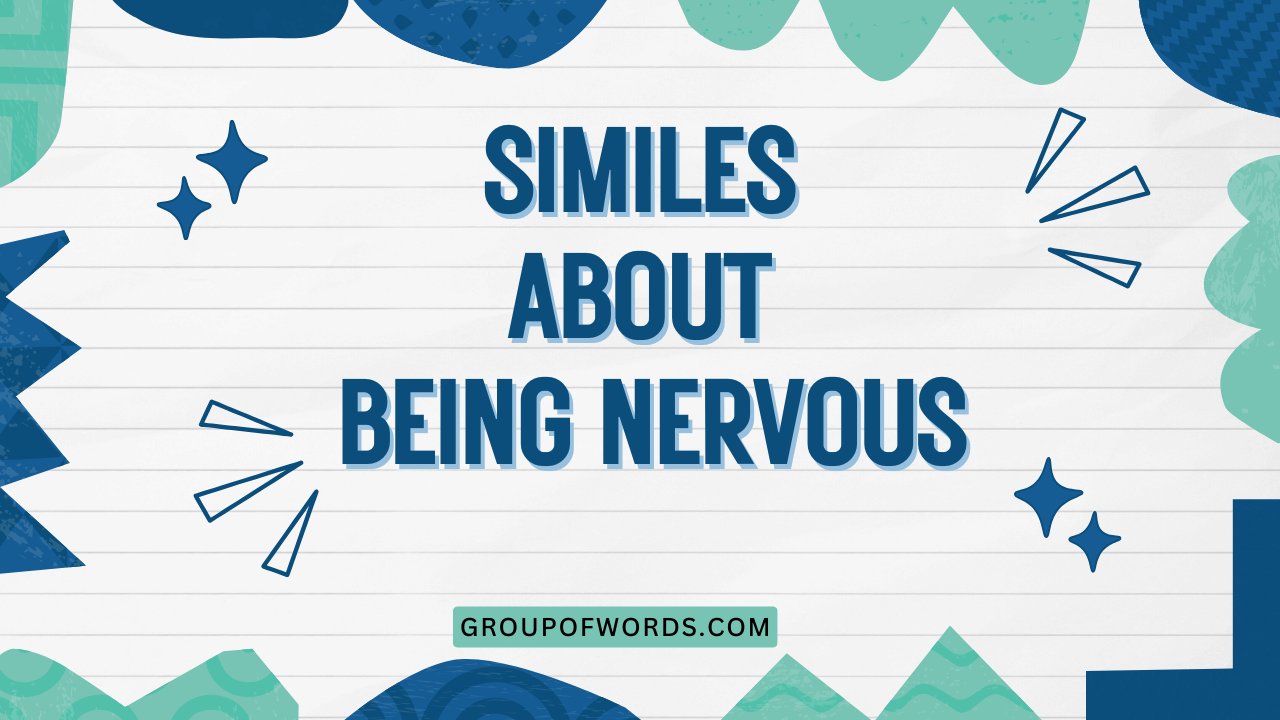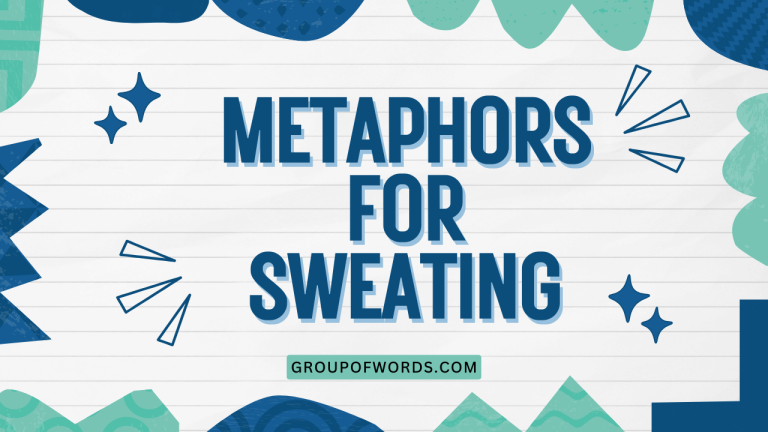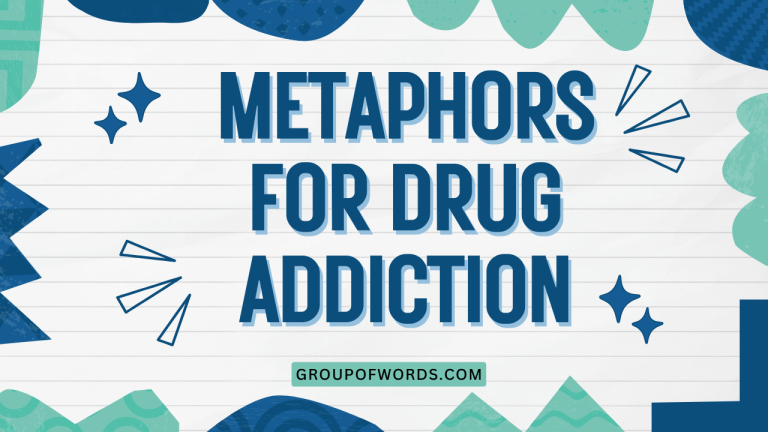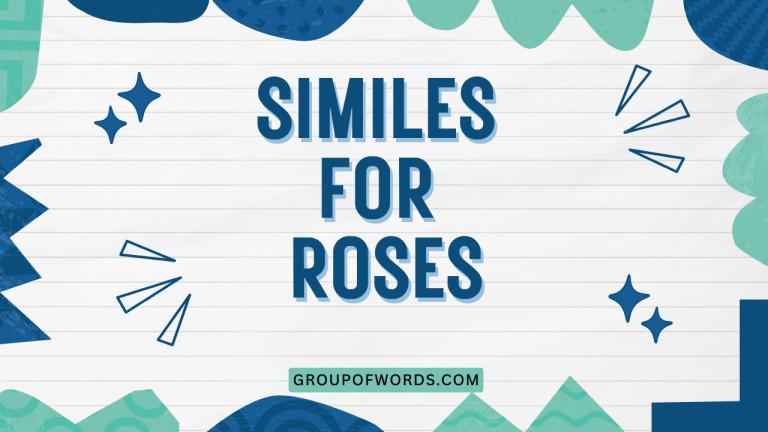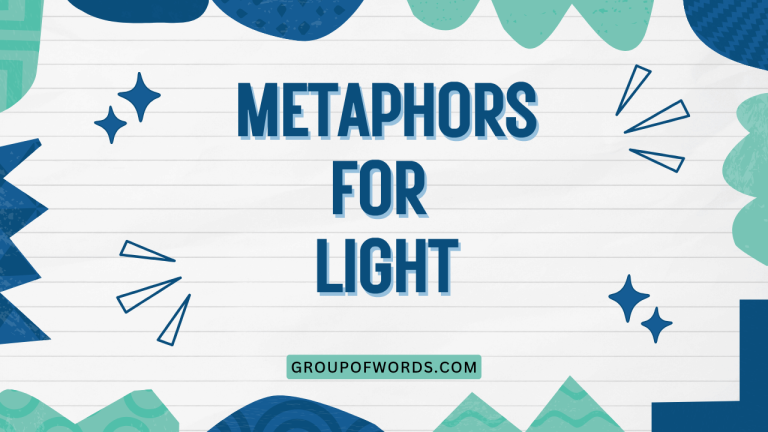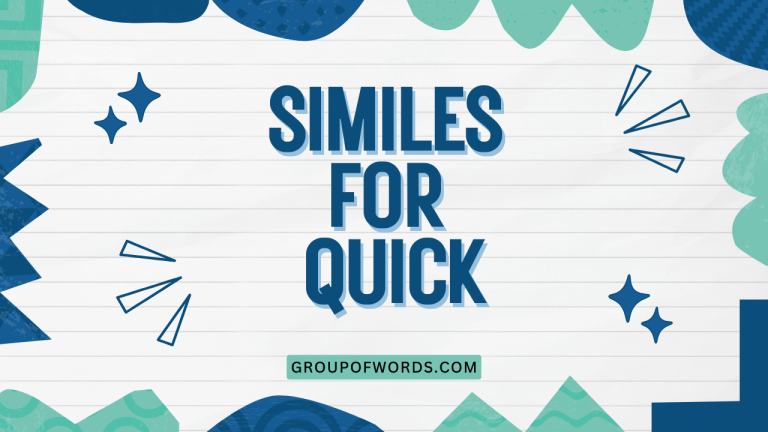Feeling the Butterflies: Mastering Similes for Nervousness
Understanding how to express emotions effectively is a crucial part of mastering the English language. Similes, with their vivid comparisons, offer a powerful tool for conveying the feeling of nervousness.
This article delves into the world of similes used to describe nervousness, exploring their structure, usage, and impact. Whether you’re an English language learner, a writer seeking to enrich your descriptions, or simply someone curious about the nuances of language, this comprehensive guide will provide you with the knowledge and skills to use similes effectively to illustrate nervousness.
This article is designed to benefit anyone looking to improve their understanding and use of similes, particularly in the context of describing emotions like nervousness. From defining what similes are and how they work to providing numerous examples and practice exercises, this guide offers a structured approach to mastering this aspect of English grammar.
Table of Contents
- Definition of Similes for Nervousness
- Structural Breakdown of Nervous Similes
- Types of Nervous Similes
- Examples of Similes for Nervousness
- Usage Rules for Nervous Similes
- Common Mistakes with Nervous Similes
- Practice Exercises
- Advanced Topics: Nuances and Subtleties
- Frequently Asked Questions
- Conclusion
Definition of Similes for Nervousness
A simile is a figure of speech that compares two unlike things using the words “like” or “as.” In the context of nervousness, similes are used to create a vivid and relatable image of the feeling. They help to express the internal state of anxiety, apprehension, or unease by drawing parallels with more tangible or easily understood concepts.
Similes provide a richer and more descriptive way to convey nervousness compared to simply stating “I am nervous.” They allow the speaker or writer to evoke a specific feeling or image in the mind of the audience, enhancing the emotional impact of the message. For example, saying “I was as nervous as a long-tailed cat in a room full of rocking chairs” paints a far more detailed and engaging picture than simply saying “I was nervous.”
The function of similes for nervousness is multifaceted. They not only describe the feeling but also help the audience empathize with the person experiencing it.
By comparing nervousness to something familiar, such as a trembling leaf or a coiled spring, the audience can better understand the intensity and nature of the emotion.
Structural Breakdown of Nervous Similes
The basic structure of a simile consists of three main components: the subject (the person or thing experiencing nervousness), the linking word (“like” or “as”), and the object of comparison (the thing the nervousness is being compared to). Understanding this structure is essential for creating effective and grammatically correct similes.
The formula for a simile can be represented as: Subject + Linking Word + Object of Comparison. For example, in the simile “He was as pale as a ghost,” “He” is the subject, “as” is the linking word, and “a pale ghost” is the object of comparison. The object of comparison should be something that is commonly associated with the feeling of nervousness, such as trembling, shaking, or feeling unsteady.
The linking words “like” and “as” are interchangeable in many cases, but there can be subtle differences in their usage. “As” is often used when the comparison is more direct or emphasizes a specific quality, while “like” can be used for more general comparisons.
For example, “He felt as cold as ice” emphasizes the specific quality of coldness, while “He felt like he was walking on eggshells” describes a general feeling of unease and caution.
Types of Nervous Similes
Similes for nervousness can be categorized based on the type of comparison they make. Some similes focus on physical manifestations of nervousness, while others focus on the emotional or mental aspects.
Understanding these different types can help you choose the most appropriate simile for a given situation.
Physical Similes
These similes compare the physical sensations of nervousness to tangible objects or actions. They often describe things like trembling, sweating, or a racing heart.
Examples include:
- As shaky as a leaf in the wind
- Like a coiled spring ready to snap
- As sweaty as a marathon runner
Emotional Similes
These similes focus on the emotional or mental state associated with nervousness. They describe feelings of anxiety, fear, or apprehension.
Examples include:
- Like walking on eggshells
- As anxious as a cat in a dog pound
- As fearful as a child lost in a crowd
Behavioral Similes
These similes describe how nervousness affects a person’s behavior. They might describe fidgeting, stuttering, or an inability to concentrate.
Examples include:
- Like a deer caught in headlights
- As tongue-tied as a shy schoolboy
- As fidgety as a toddler before naptime
Examples of Similes for Nervousness
The following tables provide extensive examples of similes used to describe nervousness, categorized by the aspect of nervousness they emphasize. Each table includes a variety of similes, showcasing different ways to express the same emotion.
Examples of Physical Nervousness Similes
This table focuses on similes that illustrate the physical manifestations of nervousness, such as trembling, sweating, and a racing heart. These similes often use vivid imagery to convey the intensity of the physical sensations.
| Simile | Explanation |
|---|---|
| As shaky as a leaf on a tree | Describes uncontrollable trembling due to nervousness. |
| Like a hummingbird’s wings, my heart fluttered | Illustrates a rapid and erratic heartbeat. |
| As cold as ice, my hands trembled uncontrollably. | Emphasizes the physical sensation of coldness and shaking. |
| My knees felt like jelly | Describes a feeling of weakness and instability. |
| My stomach was churning like a washing machine | Illustrates a feeling of nausea and unease. |
| As sweaty as a pig | Describes excessive sweating due to anxiety. |
| My voice was as shaky as a faulty microphone | Illustrates a trembling voice caused by nervousness. |
| Like a tightly wound spring, my muscles were tense. | Describes muscle tension and a feeling of being on edge. |
| As pale as a ghost, I waited for the results. | Illustrates extreme paleness due to fear. |
| My breath came in gasps, like a fish out of water. | Describes shortness of breath due to panic. |
| I felt like my heart was going to beat out of my chest. | Emphasizes the intensity of a rapid heartbeat. |
| As clumsy as a newborn calf, I stumbled on stage. | Illustrates a lack of coordination due to nervousness. |
| My hands were clammy like a wet fish. | Describes the feeling of sweaty and cold hands. |
| My face was as red as a tomato. | Illustrates facial flushing due to anxiety. |
| Like a drum solo, my pulse was erratic and loud. | Describes an irregular and pounding pulse. |
| As stiff as a board, I stood before the audience. | Illustrates muscle rigidity due to anxiety. |
| My throat felt as dry as the Sahara Desert. | Describes a dry throat due to nervousness. |
| Like popcorn popping, my muscles twitched uncontrollably. | Illustrates muscle spasms due to anxiety. |
| As brittle as glass, I felt like I could shatter any moment. | Emphasizes the feeling of fragility due to stress. |
| My head was spinning like a top. | Describes dizziness due to nervousness. |
| My vision started to blur like a poorly focused camera lens. | Illustrates blurred vision due to anxiety. |
| I felt like my blood had turned to ice water. | Describes the feeling of extreme coldness and fear. |
Examples of Emotional Nervousness Similes
This table focuses on similes that capture the emotional and mental aspects of nervousness, such as anxiety, fear, and apprehension. These similes often use abstract concepts to convey the internal state of the person experiencing nervousness.
| Simile | Explanation |
|---|---|
| Like walking on eggshells | Describes a feeling of extreme caution and unease. |
| As anxious as a cat in a dog pound | Illustrates a feeling of being surrounded by danger. |
| As fearful as a child lost in a crowd | Emphasizes the feeling of vulnerability and helplessness. |
| I felt like I was standing on the edge of a cliff | Describes a feeling of being on the verge of something dangerous. |
| My mind was racing like a runaway train | Illustrates a feeling of thoughts spiraling out of control. |
| As apprehensive as a prisoner awaiting trial | Describes a feeling of dread and uncertainty. |
| I felt like I was drowning in a sea of anxiety | Illustrates a feeling of being overwhelmed by fear. |
| As worried as a mother hen protecting her chicks | Describes a feeling of protective anxiety. |
| Like a dark cloud hanging over my head, my anxiety never lifted. | Emphasizes the persistent and oppressive nature of anxiety. |
| I felt like I was trapped in a nightmare | Describes a feeling of being in a terrifying and inescapable situation. |
| As helpless as a baby bird fallen from its nest | Illustrates a feeling of complete vulnerability. |
| My thoughts swirled like a tornado, impossible to grasp. | Describes chaotic and overwhelming thoughts. |
| I felt like I was walking through a minefield. | Illustrates a feeling of constant danger and uncertainty. |
| As uneasy as a spy in enemy territory | Describes a feeling of being constantly watched and threatened. |
| My stomach dropped like an elevator plummeting down. | Illustrates a sudden feeling of dread and fear. |
| Like a fragile vase, my composure threatened to shatter. | Describes a feeling of being on the verge of losing control. |
| I felt like I was carrying the weight of the world on my shoulders. | Emphasizes the feeling of being burdened by responsibility and anxiety. |
| As vulnerable as a turtle without its shell | Illustrates a feeling of being exposed and unprotected. |
| My heart pounded like a drum in a silent room. | Describes an intense and noticeable heartbeat. |
| I felt like I was balancing on a tightrope. | Illustrates a feeling of needing to maintain perfect control. |
| As exposed as a spotlight on a stage | Describes a feeling of being overly scrutinized. |
| My mind felt like a tangled ball of yarn. | Illustrates a feeling of confusion and disorganization. |
Examples of Behavioral Nervousness Similes
This table focuses on similes that describe how nervousness manifests in a person’s behavior, such as fidgeting, stuttering, and an inability to concentrate. These similes often use relatable situations to illustrate the impact of nervousness on actions and reactions.
| Simile | Explanation |
|---|---|
| Like a deer caught in headlights | Describes a feeling of being frozen and unable to react. |
| As tongue-tied as a shy schoolboy | Illustrates difficulty speaking due to nervousness. |
| As fidgety as a toddler before naptime | Describes restless and repetitive movements. |
| I felt like I was walking through quicksand | Describes a feeling of being stuck and unable to move forward. |
| My thoughts scattered like leaves in the wind | Illustrates difficulty concentrating and focusing. |
| As awkward as a penguin on land | Describes a feeling of clumsiness and social unease. |
| I felt like I was trying to solve a puzzle with missing pieces | Illustrates difficulty thinking clearly and logically. |
| As hesitant as a child approaching a stranger | Describes a cautious and uncertain demeanor. |
| Like a broken record, I kept repeating the same phrases. | Emphasizes repetitive speech due to anxiety. |
| I felt like I was trying to hold water in my hands | Illustrates difficulty maintaining control and composure. |
| As scattered as a flock of birds when startled | Describes disorganized thoughts and actions. |
| My words stumbled out like a newborn foal trying to walk. | Illustrates awkward and hesitant speech. |
| I felt like I was trying to climb a greased pole. | Describes feeling as though one is facing an insurmountable task. |
| As evasive as a politician answering a tough question | Describes an attempt to avoid direct engagement. |
| My smile felt as fake as a plastic flower. | Illustrates an unnatural or forced expression. |
| Like a marionette, my movements felt forced and unnatural. | Describes a lack of spontaneity and control. |
| I felt like I was reading from a script I hadn’t rehearsed. | Illustrates a lack of preparedness and confidence. |
| As withdrawn as a snail into its shell | Describes a tendency to retreat from social interaction. |
| My laughter sounded as hollow as an empty barrel. | Illustrates insincere or forced laughter. |
| I felt like I was talking to a brick wall. | Describes difficulty communicating effectively. |
| As reactive as a hair-trigger, I jumped at every sound. | Illustrates being easily startled. |
| My attention was as fleeting as a hummingbird’s visit. | Describes difficulty maintaining focus. |
Usage Rules for Nervous Similes
Using similes effectively requires an understanding of the rules that govern their usage. While similes offer creative freedom, it’s important to ensure that they are grammatically correct and appropriate for the context.
Rule 1: Ensure the comparison is logical and relatable. The object of comparison should have a clear connection to the feeling of nervousness. For example, comparing nervousness to “a roaring lion” might not be as effective as comparing it to “a trembling mouse” because the latter more closely aligns with the typical experience of fear and anxiety.
Rule 2: Use “like” or “as” correctly. “Like” is used to compare nouns or pronouns, while “as” can be used to compare clauses or phrases. For example, “He was as nervous as I was” is grammatically correct because it compares two clauses, while “He was like a nervous wreck” is correct because it compares a person to a noun phrase.
Rule 3: Avoid cliches. Overused similes can lose their impact and sound unoriginal. Try to come up with fresh and creative comparisons that will surprise and engage your audience. Instead of saying “as nervous as a cat on a hot tin roof,” consider something more unique, such as “as nervous as a long-tailed cat in a room full of rocking chairs.”
Rule 4: Consider the tone and context. The choice of simile should be appropriate for the overall tone of the writing or conversation. A humorous simile might be suitable for a lighthearted situation, while a more serious simile would be more appropriate for a somber or dramatic context.
Common Mistakes with Nervous Similes
Even experienced writers can make mistakes when using similes. Understanding these common errors can help you avoid them and use similes more effectively.
Mistake 1: Illogical comparisons. This occurs when the object of comparison doesn’t logically relate to the feeling of nervousness.
- Incorrect: He was as nervous as a sunny day.
- Correct: He was as nervous as a student before an exam.
Mistake 2: Using cliches. Overused similes can sound unoriginal and lack impact.
- Incorrect: He was as nervous as a cat on a hot tin roof.
- Correct: He was as nervous as a tightrope walker without a net.
Mistake 3: Grammatical errors. Using “like” and “as” incorrectly can lead to grammatical errors.
- Incorrect: He was nervous as he was going to fail.
- Correct: He was as nervous as if he was going to fail.
Mistake 4: Mixed metaphors and similes. Confusing metaphors and similes can create nonsensical comparisons.
- Incorrect: He was a nervous wreck, like a storm brewing.
- Correct: He was like a nervous wreck. OR He was a storm brewing.
Practice Exercises
Test your understanding of similes for nervousness with these practice exercises. Fill in the blanks with appropriate similes to complete the sentences.
Exercise 1: Fill in the Blanks
Complete the following sentences with a simile that effectively describes nervousness.
| Question | Answer |
|---|---|
| 1. Before the presentation, she was ____________________. | 1. Before the presentation, she was as nervous as a kitten in a room full of rocking chairs. |
| 2. His hands trembled ____________________. | 2. His hands trembled like leaves in a windstorm. |
| 3. He felt ____________________ about the upcoming interview. | 3. He felt as anxious as a student awaiting exam results. |
| 4. Her voice was ____________________ when she spoke to the crowd. | 4. Her voice was as shaky as a leaf on a tree when she spoke to the crowd. |
| 5. His stomach churned ____________________. | 5. His stomach churned like a washing machine on spin cycle. |
| 6. He was ____________________ about meeting her parents. | 6. He was as apprehensive as a prisoner awaiting trial about meeting her parents. |
| 7. She felt ____________________ before stepping on stage. | 7. She felt like she was walking on eggshells before stepping on stage. |
| 8. His mind raced ____________________. | 8. His mind raced like a runaway train. |
| 9. He was ____________________ about the important decision. | 9. He was as worried as a mother hen about the important decision. |
| 10. She felt ____________________ before the big game. | 10. She felt like she was standing on the edge of a cliff before the big game. |
Exercise 2: Create Your Own Similes
Write your own similes to describe the following situations of nervousness.
| Situation | Your Simile |
|---|---|
| 1. Waiting for a job interview. | 1. Waiting for the job interview, I felt as jittery as a hummingbird in a hurricane. |
| 2. Giving a speech in front of a large audience. | 2. Giving a speech in front of a large audience, my voice was as unsteady as a wobbly table. |
| 3. Meeting your significant other’s parents for the first time. | 3. Meeting my significant other’s parents for the first time, I was as apprehensive as an actor forgetting his lines. |
| 4. Taking a final exam in a difficult subject. | 4. Taking a final exam in a difficult subject, my mind felt like a tangled ball of yarn. |
| 5. Going on a first date. | 5. Going on a first date, I felt like I was walking on a tightrope over a canyon. |
| 6. Auditioning for a play. | 6. Auditioning for a play, my heart was pounding like a drum solo in a quiet room. |
| 7. Before skydiving for the first time. | 7. Before skydiving for the first time, I was as terrified as a mouse cornered by a cat. |
| 8. When you are called into the boss’s office unexpectedly. | 8. When called into the boss’s office unexpectedly, I felt like I was walking the plank. |
| 9. Walking alone in a dark alley at night. | 9. Walking alone in a dark alley at night, I was as jumpy as a frog in a snake pit. |
| 10. Waiting for the results of an important medical test. | 10. Waiting for the results of an important medical test, I was as anxious as a sailor in a storm-tossed sea. |
Advanced Topics: Nuances and Subtleties
For advanced learners, understanding the nuances and subtleties of similes can elevate their writing and communication skills. This involves exploring the use of extended similes, metaphorical language, and the cultural context of comparisons.
Extended Similes: These are longer and more detailed similes that develop a comparison over several sentences or even paragraphs. They allow for a more in-depth exploration of the similarities between the subject and the object of comparison. For example, instead of saying “He was as nervous as a cat,” you could say, “He was as nervous as a cat, pacing back and forth with his fur on end, his eyes darting around the room, as if expecting danger to pounce from any corner.”
Metaphorical Language: While similes use “like” or “as” to make a comparison, metaphors directly equate two unlike things. Understanding the relationship between similes and metaphors can help you choose the most effective figure of speech for a given situation. For example, instead of saying “He was like a nervous wreck,” you could say “He was a nervous wreck,” which is a more direct and forceful statement.
Cultural Context: The effectiveness of a simile can depend on the cultural background of the audience. Some comparisons may be more relatable or meaningful to people from certain cultures or regions. For example, a simile that references a specific animal or plant might not be understood by someone who is unfamiliar with that species. Consider your audience when choosing similes to ensure that they are universally understood and appreciated.
Frequently Asked Questions
Here are some frequently asked questions about similes for nervousness, along with detailed answers to help you further your understanding.
Q1: What is the difference between a simile and a metaphor?
A: Both similes and metaphors are figures of speech that compare two unlike things, but they do so in different ways. A simile uses the words “like” or “as” to make an explicit comparison, while a metaphor directly equates the two things without using these words. For example, “He was as nervous as a cat” is a simile, while “He was a nervous wreck” is a metaphor.
Q2: How can I avoid using cliches when creating similes?
A: To avoid cliches, try to think outside the box and come up with fresh and original comparisons. Instead of relying on overused phrases, consider drawing on your own personal experiences and observations to create similes that are unique and memorable. Brainstorming and using a thesaurus can also help you find alternative ways to express your ideas.
Q3: Can a simile be too long or too detailed?
A: Yes, a simile can be too long or too detailed if it distracts from the main point or becomes cumbersome to read. The length and level of detail should be appropriate for the context and the overall tone of the writing. Aim for clarity and conciseness, and avoid including unnecessary information that doesn’t contribute to the comparison.
Q4: Is it okay to mix similes and metaphors in the same sentence?
A: Mixing similes and metaphors in the same sentence can create confusion and weaken the impact of the comparison. It’s generally best to stick to one type of figure of speech within a single sentence or phrase. Choose the simile or metaphor that best conveys your intended meaning and use it consistently throughout the sentence.
Q5: How can I use similes to create a more vivid and engaging description of nervousness?
A: To create a more vivid and engaging description of nervousness, choose similes that appeal to the senses and evoke strong emotions. Use concrete and specific language to paint a clear picture in the reader’s mind. Consider the physical sensations, emotional state, and behavioral changes associated with nervousness, and choose similes that capture these aspects in a compelling way.
Q6: What are some common themes or images that are often used in similes for nervousness?
A: Common themes and images used in similes for nervousness include trembling, shaking, sweating, a racing heart, a churning stomach, and a feeling of being on edge. These images often draw on natural phenomena, animals, or everyday objects to create relatable and evocative comparisons. Examples include “as shaky as a leaf,” “like a coiled spring,” and “as sweaty as a marathon runner.”
Q7: How do cultural differences affect the interpretation of similes?
A: Cultural differences can significantly impact the interpretation of similes because the meaning and associations of specific images and concepts can vary across cultures. A simile that is effective in one culture may be confusing or even offensive in another. It’s important to be aware of these cultural differences and to choose similes that are appropriate for your target audience.
Q8: Can similes be used in formal writing, or are they better suited for informal contexts?
A: Similes can be used in both formal and informal writing, but the choice of simile should be appropriate for the tone and style of the piece. In formal writing, it’s generally best to use more sophisticated and subtle similes that enhance the clarity and precision of the description. In informal writing, you have more freedom to use humorous or unconventional similes to create a more relaxed and engaging tone.
Conclusion
Mastering the use of similes to describe nervousness can significantly enhance your ability to express emotions vividly and effectively. By understanding the structure, types, and usage rules of these similes, you can create compelling descriptions that resonate with your audience.
Remember to avoid cliches, use logical comparisons, and consider the context and tone of your writing.
Practice is key to mastering any grammar concept. Use the examples and exercises provided in this article to hone your skills and experiment with different similes.
Pay attention to how other writers use similes to describe nervousness, and try to incorporate their techniques into your own writing. With dedication and practice, you can become proficient in using similes to express the nuances and complexities of human emotion.
Continue to explore and experiment with similes in your writing and speech. The more you practice, the more natural and intuitive it will become.
By mastering this powerful tool, you can elevate your communication skills and create writing that is both engaging and impactful. Remember to always consider your audience and the context in which you are using the simile to ensure that it is appropriate and effective.
